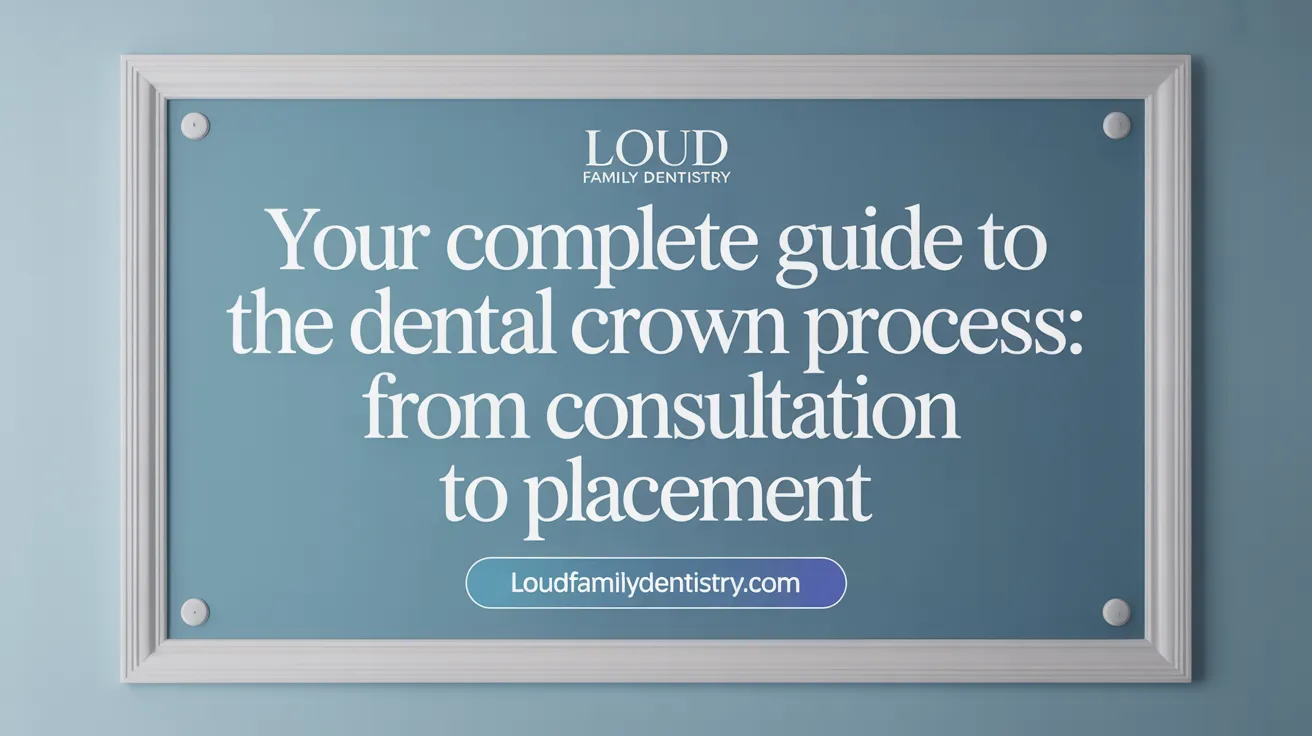Understanding Dental Crowns: Purpose and Importance
Dental crowns are essential restorative dental treatments designed to protect, restore, and enhance damaged or weakened teeth. Serving multiple functional and aesthetic purposes, crowns help maintain oral health and improve patient confidence. This comprehensive overview will guide you through the types of dental crowns, preparation and placement procedures, costs, aftercare, and factors influencing their success and longevity.
What Are Dental Crowns and Their Main Purposes?

What are dental crowns and what purposes do they serve?
Dental crowns are custom-made, tooth-shaped caps that fit over the damaged or weakened tooth, functioning as a protective and restorative covering. They are used in various dental situations to enhance both function and appearance. Crowns can restore the shape, size, and strength of teeth that are decayed, fractured, or heavily worn down. They are also ideal for covering teeth that are discolored, chipped, or misshapen, providing an improved aesthetic look.
Beyond cosmetic benefits, crowns serve critical functional purposes. They strengthen weak or cracked teeth, helping to prevent further damage and enabling better chewing and biting. Crowns also support dental procedures, such as holding dental bridges in place, covering dental implants, and sealing teeth after root canal treatments. Made from durable materials used for dental crowns like porcelain, ceramic, or metal, crowns are designed to last for several years. With proper oral hygiene and regular dental checkups, crowns can remain in good condition for 5 to 15 years, and in some cases, even longer.
Overall, dental crowns are versatile restorations that protect compromised teeth, restore their natural function, and improve overall smile aesthetics.
Types of Dental Crowns: Materials, Advantages, and Disadvantages
 Different crown materials and their properties
Different crown materials and their properties
Dental crowns are crafted from a variety of materials, each tailored to meet specific functional and aesthetic needs. The most common materials include porcelain crowns, ceramic, metal alloys (such as gold, palladium, nickel, and chromium), zirconia crowns, and porcelain-fused-to-metal (PFM) crowns. Porcelain and other ceramics are prized for their ability to mimic natural teeth closely, offering excellent aesthetics and translucency, which makes them the top choice for front teeth. Metal crowns, made from gold or base metal alloys, are exceptionally durable and resistant to wear, making them suitable for molars and heavy-chewing areas. Zirconia, a type of ceramic, blends high strength with good aesthetics, providing durability against chipping and cracks. PFM crowns combine the strength of a metal core with the natural look of porcelain, blending durability with visual appeal.
Advantages and disadvantages of porcelain, metal, zirconia, PFM crowns
Porcelain crowns excel in appearance, perfectly matching natural tooth color, but can be more prone to chipping and require more care. Metal crowns are highly durable and have a long lifespan but are less aesthetically pleasing, often reserved for less visible molars. Zirconia crowns stand out for their robust strength and resistance to fracture, making them durable yet visually appealing. However, they tend to be more expensive and can cause wear on opposing teeth if not carefully selected. PFM crowns offer a compromise by providing both strength and natural look, but they can sometimes show a dark line at the gum margin and may wear down adjacent teeth over time.
Factors to consider when selecting crown material
Choosing the right crown material involves evaluating various factors, including the tooth’s location and function, aesthetic requirements, budget constraints, and the patient’s dental health. For front teeth where appearance is paramount, porcelain or zirconia is often preferred. For back teeth subjected to heavy biting forces, metal or zirconia crowns are more appropriate due to their strength. Cost considerations and potential allergies to certain metals also influence material choice. An experienced dentist can recommend the best option based on individual needs, balancing durability, appearance, and cost to achieve optimal results.
Step-by-Step Overview of Getting a Dental Crown

Initial consultation and examination
Getting a dental crown begins with a comprehensive dental assessment. The dentist examines the damaged tooth, taking X-rays if necessary, to evaluate the extent of decay or structural damage. This evaluation helps determine whether a crown is the most appropriate treatment. During this appointment, the dentist discusses material options, costs, and the overall procedure, ensuring the patient understands what to expect.
Tooth preparation including reshaping and decay treatment
The first actual step involves preparing the tooth. The dentist administers local anesthesia to numb the area, then carefully reshapes the tooth by removing a small amount of enamel—usually about 1-2 millimeters—to create a proper surface for the crown. If there is decay or old fillings, these are cleaned out and repaired to ensure the tooth is healthy and stable before placing the crown. Sometimes, the dentist builds up the tooth with filling material if it is severely decayed or broken to support the crown. For details on this step, see dental crown preparation.
Impression taking methods
Once the tooth is prepared, impressions are taken to ensure the crown fits perfectly. Traditional impressions involve biting into a putty-like material that hardens quickly, capturing a mold of the tooth. Alternatively, digital impressions can be taken using advanced scanning devices, which create highly accurate 3D images of the tooth and surrounding tissue. These impressions are sent to a dental lab, where the custom crown is fabricated.
Temporary crown placement and final crown fitting
While the permanent crown is being made, a temporary crown is placed over the prepared tooth to protect it from damage or sensitivity. This temporary crown is usually made from acrylic or composite resin and is cemented with temporary cement. During the second appointment, the temporary crown is removed, and the dentist fits the permanent crown onto the tooth, checking for proper bite, fit, and appearance. Small adjustments are made if necessary. The final crown is then cemented securely with a special dental adhesive. Learn more about this in dental crown fitting and cementing.
Proper home care and regular dental visits help preserve the crown’s integrity. With the correct maintenance, a dental crown can serve effectively for five to fifteen years, or even longer, restoring both function and aesthetics to the tooth. See tips on caring for dental crowns and maintaining dental crowns.
Preparing Your Tooth for a Dental Crown: What to Expect
Examination and X-ray assessment
The process of preparing a tooth for a dental crown starts with a thorough examination by your dentist. They will inspect the damaged tooth visually and may take X-rays to evaluate the extent of decay, infection, or structural weakness beneath the surface. This helps determine whether a crown is the appropriate restorative option and if any underlying issues, such as root problems, need to be addressed first. See more about initial consultation and oral examination.
Numbing and shaping the tooth
To keep you comfortable during the procedure, your dentist will administer local anesthesia around the affected tooth. Once numb, they will carefully reshape the tooth by removing a small amount of enamel from its surface. This shaping creates enough space for the crown to fit securely over the tooth without affecting your bite or appearance. Proper shaping is crucial for ensuring the crown bonds well and functions naturally. Learn about tooth preparation for crowns.
Removal of decay and possible buildup
If there is any decay, it will be carefully removed using dental drills or ultrasonic instruments. Removing decayed tissue prevents future infections and ensures the restoration’s longevity. In cases where the tooth’s structure is weak or has been extensively damaged, the dentist might add a filling material or core buildup to reinforce the tooth’s foundation before placing the crown. More details on removing tooth decay and tooth preparation.
Impression and temporary crown placement
After shaping the tooth, your dentist will take impressions of the prepared tooth and surrounding teeth. These impressions can be made using traditional molding materials or through digital scanning technology. The information is sent to a dental lab where your custom crown is fabricated, which generally takes about two to three weeks. While waiting, a temporary crown made of acrylic or composite material is placed over your tooth to protect it and maintain normal function. For more info see dental crown impressions and temporary crowns.
This preparation phase is vital for ensuring that your crown fits correctly, feels comfortable, and looks natural, helping to restore your smile and dental health. Proper preparation and care throughout the process can greatly extend the lifespan of your dental crown and optimize its performance.
Understanding Costs: What Influences the Price of Dental Crowns?

How much do dental crowns typically cost and what factors influence the price?
The expense of dental crowns generally falls between $800 and $3,000 for each tooth. On average, patients can expect to pay about $1,100 to $2,000. Several factors determine the final cost, starting with the material used—porcelain, ceramic, zirconia, and resin tend to be on the higher end due to their natural appearance and strength, while metal crowns are usually more affordable.
Additional costs stem from the laboratory work involved in fabricating the crown, the dentist’s fees for procedures, as well as any pre-treatments needed such as root canals, buildup, or extractions. The location of the dental practice also influences the price; for example, crowns in urban or high-demand areas like NYC tend to be more expensive.
Insurance coverage plays a significant role, often covering around 50% of the cost for medically necessary crowns. However, coverage varies widely depending on your insurance plan, the reason for the crown (cosmetic vs. restorative), and whether the procedure is fully deemed necessary by the dentist.
To manage expenses, many patients explore financing options, use health savings accounts (HSAs) or flexible spending accounts (FSAs), or opt for in-house payment plans. Timely treatment not only reduces overall costs but also prevents more extensive and costly dental issues down the line, making early intervention a wise financial decision.
Aftercare and Maintenance: Ensuring Longevity of Your Dental Crown
What aftercare and maintenance is recommended for dental crowns?
Proper aftercare is crucial for extending the life of your dental crown. Patients should focus on maintaining excellent oral hygiene by brushing twice daily using a soft-bristled toothbrush and fluoride toothpaste. Flossing gently around the crown margins helps prevent plaque buildup and gum disease, reducing the risk of decay at the tooth's base.
In the initial days following crown placement, it's advisable to avoid hard, sticky, and chewy foods to prevent damaging the crown or dislodging the temporary crown. If a temporary dental crown is in place, steer clear of sticky foods and do not floss directly over it; instead, floss gently around the crown.
Patients should wait at least 24 hours after the dental crown procedure before eating full meals. During this time, stick to soft foods that require minimal chewing. Avoid extremely hot or cold foods initially, as they may trigger post-procedure sensitivity. Warm salt water rinses can help soothe gums and promote healing, and over-the-counter pain relievers can reduce discomfort if needed.
Regular dental checkups are essential to ensure the crown remains secure and the underlying tooth is healthy. During these visits, your dentist will evaluate the crown for chips, cracks, or looseness, and perform cleanings to prevent decay.
Long-term care involves avoiding hard foods like ice, nuts, or popcorn that could crack the crown. Using a nightguard is recommended if you grind or clench your teeth, as this helps protect the crown from excessive forces.
Most crowns last between 5 to 15 years, but with diligent care, some can endure upwards of 30 years. Consistent oral hygiene, regular professional cleanings, and mindful eating habits are the best strategy to ensure your dental crown remains functional and attractive for many years.
Complications, Risks, and Factors Affecting Crown Longevity

What are common complications and risks associated with dental crowns?
Dental crowns are highly effective restorative tools, but like all dental treatments, they come with potential complications. One common issue is post-procedure sensitivity, particularly if the crown does not fit perfectly or if the underlying dentin is exposed during preparation. This sensitivity manifests as discomfort when consuming hot, cold, or sweet foods.
Another concern is the loosening or dislodgement of the crown over time, which can happen due to cement failure or improper fit. Porcelain crowns while aesthetically pleasing, are susceptible to chipping or fracturing if subjected to excessive biting forces or trauma. Additionally, decay can develop at the margins where the crown contacts the natural tooth, especially if oral hygiene routines are neglected.
Gum irritation, recession, or inflammation around the crowned tooth may also occur, increasing the risk of periodontal disease if not adequately managed. Some individuals might experience allergic reactions to certain materials, especially metals used in the crown's metal alloys. To minimize these risks, proper fitting by an experienced dentist, ongoing oral hygiene, and avoiding hard or sticky foods are essential.
What factors influence the success and longevity of dental crowns?
Several factors determine how long a dental crown will last and its overall success. Material selection is a primary consideration; porcelain and ceramic crowns are favored for their natural look but may be less durable for back teeth compared to metal or zirconia crowns, which are stronger and more resistant to fracture.
Equally important is the preparation process. Precise tooth shaping, proper removal of decay, and ensuring a good fit are crucial for the crown's long-term stability. An experienced dentist can help prevent issues like improper margins or tension that can lead to early failure.
Patient behaviors greatly impact crown longevity. Maintaining diligent oral hygiene—brushing twice daily, flossing, and attending regular check-ups—reduces the risk of decay and gum disease that can compromise the restoration. Avoiding habits such as grinding teeth, biting on ice, or using teeth to open packages can also prevent fractures or loosening.
Individual factors, including the tooth’s location, remaining natural structure, and gum health, influence how well a crown performs over time. A combination of proper material choice, skilled dental care, and disciplined oral health habits can significantly extend the life of a crown, often up to 30 years or more.
Key Takeaways: Ensuring a Successful Dental Crown Journey
Dental crowns play a vital role in restoring and protecting damaged teeth, offering both functional and aesthetic benefits. Selecting the appropriate crown material tailored to individual needs, understanding the multi-stage procedure, and preparing thoroughly are essential for optimal outcomes. Managing costs through insurance and payment options and adhering to diligent aftercare practices help extend the crown's lifespan. Awareness of potential complications and acting promptly to address issues can preserve the health of the crowned tooth. Ultimately, collaboration with a skilled dental professional and maintaining good oral hygiene are paramount to achieving long-lasting success with dental crowns.
